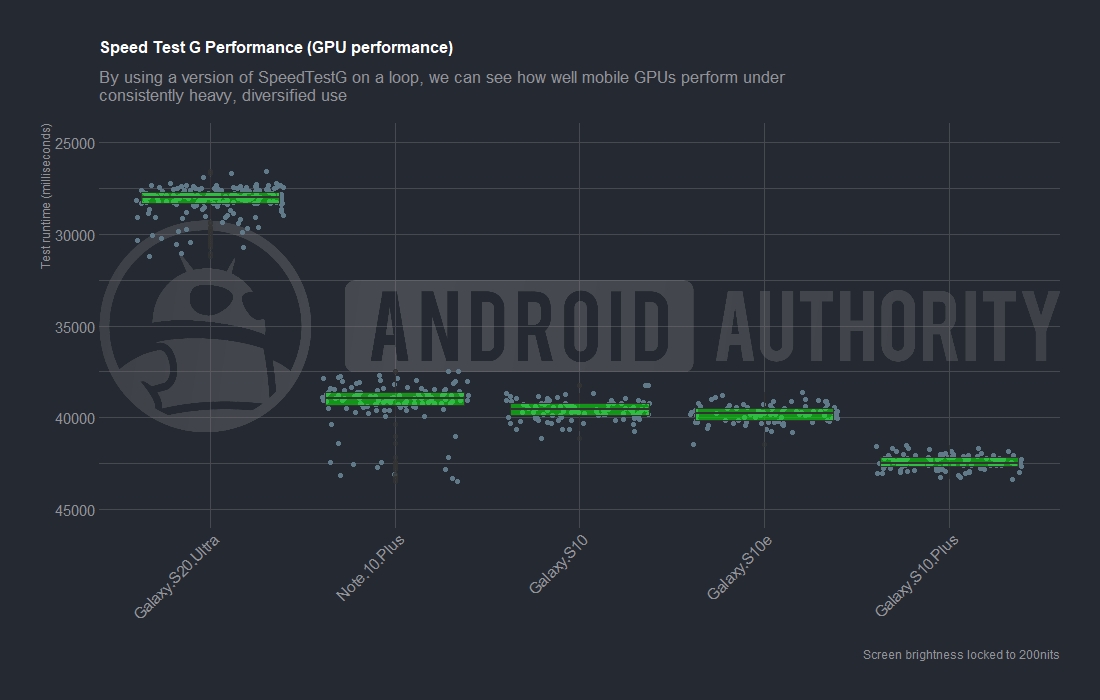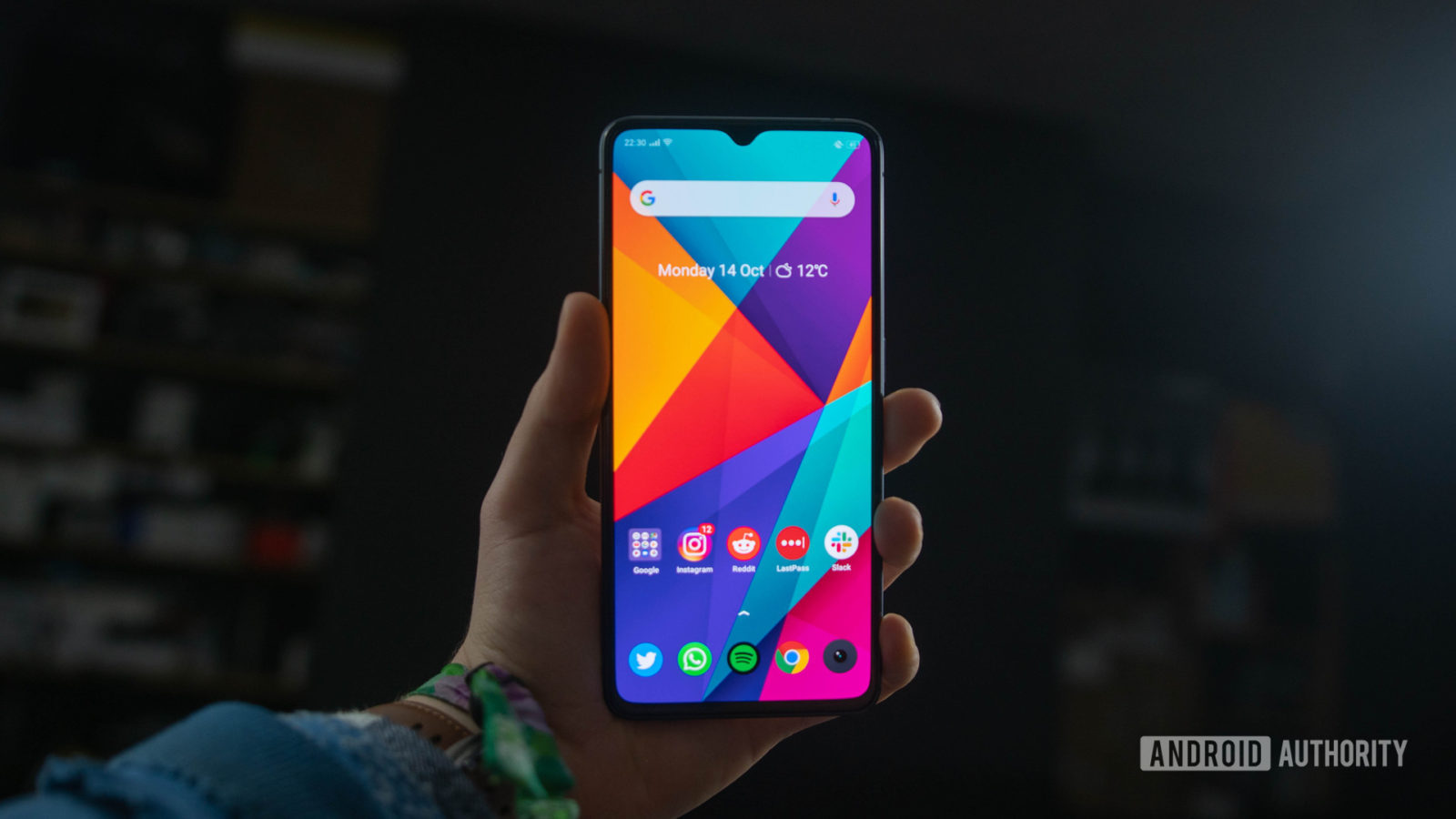Samsung Galaxy S20 series is the new performance king

Another year, another batch of new phones boasting the finest in mobile processing technology. It comes as little surprise then that the Samsung Galaxy S20 series seizes the performance crown from last year’s flagship phones. However, the sheer scale of some of the improvements certainly makes for some important news.
The Samsung Galaxy S20 also raises a few new important performance questions. Does the new 120Hz display perform as well as the traditional 60Hz mode? Can the handset sustain peak performance? And is the gap between Snapdragon and Exynos models widening or shrinking?
We’re going to take a deeper look at all these questions as we dive into our Samsung Galaxy S20 benchmarks results.
How does the Galaxy S20 perform?
To start, let’s take a browse through our typical array of benchmarks.
The AnTuTu overall system benchmark reveals a major step up in performance for the Samsung Galaxy S20 Ultra, both compared to its Galaxy predecessors and blazing fast Snapdragon 855 Plus flagships from 2019. A hefty chunk of this system performance upgrade comes from the use of fast LPDDR5 RAM, newly supported in the Snapdragon 865 SoC along with an improved cache system. As a result, booting up and swapping in and out of apps should feel even snappier than before.
The Snapdragon 865 inside our Samsung Galaxy S20 Ultra matches the expected CPU performance improvements. Both single core and multi-core GeekBench 4 results show a similar 18 – 21% improvement. Qualcomm touted such a jump with the move to the Arm Cortex-A77 core. However, the results also highlight the larger 3MB system cache and 4MB L3 shared cache doing their job. Ensuring CPU cores share resources efficiently as their individual performance scales up.
Faster memory comes back into play when we examine gaming performance. A look at the 3DMark result confirms a major boost to graphics capabilities. There’s a 28% uplift in performance here over our Galaxy S10. Although more powerful Snapdragon 885 Plus handsets are just 16% behind the S20 Ultra. Still, graphics performance is where you’ll find the biggest performance update this time around. Combined with the 120Hz display, mobile gamers have plenty to be excited about with Samsung’s latest flagship.
In addition to the classic benchmarks, we’ve run Speed Test G on Samsung’s latest flagship too. Here’s what we found.
We again see the performance uplift compared to last year’s handsets. The old Google Pixel in the results goes to show how far improvements have come over the last few years. Although clearly performance improvements are having diminishing returns.
Importantly, over 100 tests we can demonstrate that the Galaxy S10 Ultra, along with other Samsung handsets, seldom deviates from its peak performance. It’s very consistent, unlike some other handsets that attempt to push their performance but can’t maintain it for long.
However, when we look more closely at the CPU performance scores, there’s some more deviation than previous generations. Performance scales from Snapdragon 855 territory at its lowest but still averages notable above the previous generation. This could be due to heat dissipation issues or battery optimizations. Alternatively, there may be some core allocation issues preventing the chip from using the Prime core every time. By comparison, GPU scores remain very consistent.
The Galaxy S20's CPU performance varies notably over multiple tests.
120Hz vs 60Hz display

Knowing exactly how much a 120Hz affects battery life and performance is no simple task. The content you’re viewing, such as playing a 3D game, is a far bigger drain on the performance than the screen alone. It’s even harder to quantify when hitting 120Hz isn’t feasible in a lot of scenarios, given that a lot of apps still cap at 60Hz.
What we have observed is that the Galaxy S20 Ultra’s 120Hz mode marginally affects sustainable performance. But only slightly.
In the graph above, the black line marks the mean performance, while the green bar showcases the bounds where 50% of the results fall. Here we can see that performance was certainly more consistent with the Galaxy S10 series. Although the Galaxy S20 and Note 10 aren’t as variable as some other Android devices.
The larger green bar suggests a slighter wider spread of performance results over 100 runs of Speed Test G for the 120Hz mode. The gap is only marginal and the peak and lowest results remain very consistent. This points to only a small difference in performance between 120Hz and 60Hz modes, but it’s there nonetheless.
The bottom line is that the Samsung Galaxy S20’s processing package thumps the previous Galaxy generation and last year’s most powerful flagships too. But more importantly, the Galaxy S20 Ultra maintains this peak performance just as well even after prolonged use in 120Hz mode. Meaning you won’t find your games lagging after just a few minutes of play.
Snapdragon vs Exynos
Although Samsung really doesn’t like to talk about it, the Exynos versus Snapdragon chipset comparison always makes for lively debate among phone enthusiasts. To test this particular difference, we’ve managed to get our hands on a Snapdragon Galaxy S20 Ultra and the Exynos Galaxy S20 Plus.
Check out our article here for a deep dive on the differences. In summary, the Snapdragon version of the Galaxy S20 performs better than the Exynos model. Particularly when we look at the graphics benchmark results.
If you’re after the best performance out of your Galaxy S20, and the best performance of any Android device right now, plump for the Snapdragon model.
from Android Authority https://ift.tt/2QCDSwI










No comments: